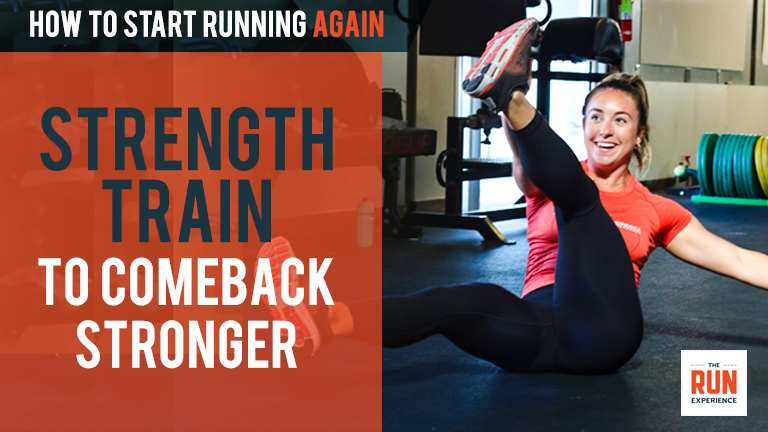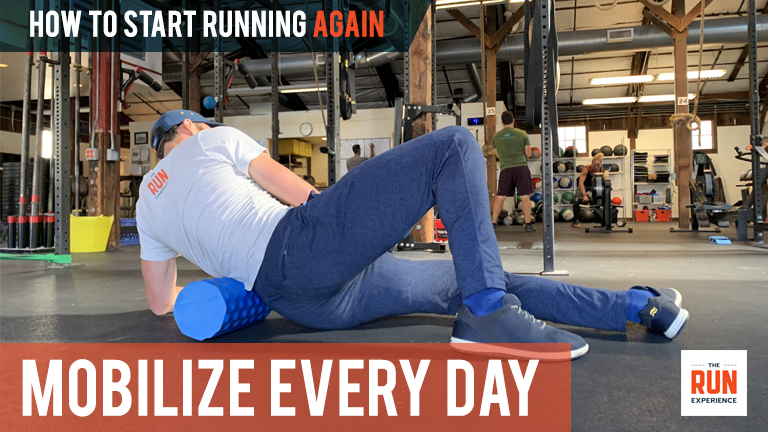How to Start Running Again (and Make the Ultimate Comeback)
Learning how to start running again isn't easy. These tips will help you come back stronger than you were before to smash your running goals.

Learning how to start running again isn’t easy. Sure, you remember how to move your legs in a running motion—but there’s a lot more going on there.
Starting to run again can often feel even harder, because despite previous progress you feel like you’re back at square one.
Your muscles have lost strength, your cardio capacity has decreased, and your consistency is gone.
But all is not lost.
You can learn how to start running again and come back stronger than ever. Most runners don’t run straight from birth to death—even the best of them. Injuries, busy schedules, life events, burnout, and just a lack of enthusiasm for running can take you away. It’s natural.
Fortunately, just because you stopped running before doesn’t mean you can’t get started again. It won’t be quite as easy as just picking up where you left off—but you’ll definitely have a headstart on someone who’s picking up running for the very first time.
Below, we’ve got plenty of tips to help you start running again so that you can get after your running goals and cross that finish line (wherever or whatever that is).
How to Start Running Again
Making a comeback to running after a break can feel like a daunting task. Whether you paused your running routine due to an injury, life events, or simply lost interest, the path back to running regularly requires a strategic and mindful approach.
Restarting your running regimen isn't just about physical readiness—it's also about mental preparation. Here’s why jumping back into running might feel particularly tough:
- Loss of Previous Fitness Levels: The most evident challenge is the loss of cardiovascular fitness and muscle strength. These declines can make even short runs feel laborious.
- Mental Barriers: Mentally, you might feel frustrated that you’re not able to pick up where you left off. This can lead to feelings of disappointment or discouragement.
- Fear of Injury: If your break was due to an injury, there might be an underlying fear of re-injury, making you overly cautious as you start running again.
Find A Training Plan
Making a plan is going to be crucial to get started running again. If you struggle with routine and accountability, a plan is going to help structure your training so that all you need to do is stick to your schedule.
You don’t have to motivate yourself to run – your plan will tell you what to do and when to do it.
And if you’re coming back from an injury, running training programs are going to minimize the risk of injury and ensure you come back in a smart, safe way.
It is all too common for runners to jump back into advanced training too quickly, only to get injured again.
Because you’re just starting up again, find a beginner running plan. You may be ready for more advanced training soon after you start, but again it’s better to be safe than sorry here.
And then once you have your beginner running training plan, stick to it and follow it closely. Whoever designed your plan did it strategically to build consistent, sustainable running ability. So, trust the plan and keep yourself accountable.
A tip for accountability: tell someone about your running plan. Just having someone know about your training, someone who can ask how your training is going, will motivate you to stick with it.
If you don’t feel comfortable sharing your comeback with anyone in person, consider an online running group. These groups have runners of all levels who have likely been through the comeback process, or are going through it at the same time as you.
Connect with someone and share updates on your training to hold yourself accountable and be sure that you follow your plan.
Strength Train

If your running training plan doesn’t include strength training, it should. Strength training is going to make a huge difference in your running form and overall running results.
And if you love your training plan but it doesn’t include strength training, just add your own. For an idea, try this strength workout for runners.
Cross-training will not only improve your running, but it breaks up your training so that you’re not doing the same thing over and over every day.
Each day can be different – one day you’re lifting weights, the next you might be on a treadmill, and the next you might be headed out for a run/walk.
And you can have have fun with your cross-training. Maybe it’s an excuse to get some new running gear or new gym clothes.
Strength training also helps tremendously with weight loss. So if one of your goals as you make your running comeback is to lose weight, don’t count out your strength training. In fact, that may even be a priority of yours as you get back into running.
And once you get going in the gym, incorporate your strength into your running form.
Squeeze your glutes while you run to improve your posture. Engage your abs to protect your back. Your form in the gym will translate to your running form, so you want to be sure you’re working correctly in both arenas.
Don’t Be Afraid of Walk Breaks

Your beginner running plan will likely start with easy runs. And when you’re just getting back into running, that means taking walk breaks.
You can break up your first couple of runs by running for 30 seconds, walking for one minute. From there you can move to running for one minute, walking for one minute.
The runs can be more of a jog to start. Over time, build up the run time and decrease the walk time until you’re running steadily through longer distances.
Taking walk breaks can make your first few runs feel less overwhelming. They help break up the time so that the run doesn’t feel so continuous.
And as you get back into running, chances are you’ll need to rebuild your stamina. Taking walk breaks is a great way to safely and steadily rebuild your stamina and endurance.
This way, you can safely increase your mileage without shocking your body or your lungs at any point.
Take Rest Days

Remember, we are going for sustainable running training here. Your plan will likely incorporate rest days – so take them. While it may seem like a good idea to go above and beyond your training plan’s prescription, those rest days are there for a reason.
There is no need to overdo your training at the beginning of your running comeback only to be sidelined again in a week or two.
Truly allow yourself to rest. However, no matter what your training plan has in store, you should be mobilizing every day.
If you don’t already have a foam roller, try to get one as soon as possible. Mobility will loosen up tightness in your muscles and decrease soreness.
This again helps to prevent injury, but it also helps to hold you accountable. It is easy for new runners or comeback runners to alter their plan or skip a workout because the soreness at the beginning is so extreme. Minimize that by rolling out daily.
In a similar vein, always incorporate a proper warm up and cool down. Dynamic or moving stretches are great before you run to get the blood flowing, while static or still stretches are a nice way to cool down after you run and let any tightness dissolve.
Start from Scratch
Don’t try to pick up running from where you left off. That’s a surefire strategy for heartbreak, disappointment, and injury.
When you quit running, you likely were doing it fairly consistently. As in, you probably ran multiple times a week and maybe even raced a handful of times a year.
When you start running again, you won’t have the same muscle and cardiovascular levels. You need to ease into things, and that means you’ll have to start from scratch.
That means:
- Starting with a lower weekly mileage
- Taking more rest days
- Running at a slower pace
- Easing into elevation and speed workouts
- Dialing in your nutrition strategy
- Racing a bit less from the start
Tips to Start Running Again
Here are additional tips to ease your transition back into running:
- Start with Walk-Run Intervals: If running feels too challenging initially, start with walk-run intervals. This approach helps build stamina gradually and reduces the risk of injury.
- Listen to Your Body: Pay close attention to how your body responds after each run. Adjust your training plan based on your body’s feedback to avoid overtraining.
- Stay Consistent: Consistency is more important than intensity when you're just starting again. Try to run regularly, even if it’s just for short distances.
- Seek Community Support: Joining a running group or online community can provide encouragement, accountability, and advice as you navigate your comeback.
The Best Way to Start Running Again
Want to know the best way to start running again?
Just get started.
Take it slow and ease into things, but don’t overthink your every step. That’s a strategy for sending you straight back to the couch.
If you can find a proper running training plan, hopefully all of these tips will just fall into place for you. If you have not found a training plan to get back into running yet, use these tips to choose the right one.
Aim to be consistent as you learn how to start running again. However, be careful not to overdo it. Trust your plan and come back stronger than you were before. This time, running is here to stay!
